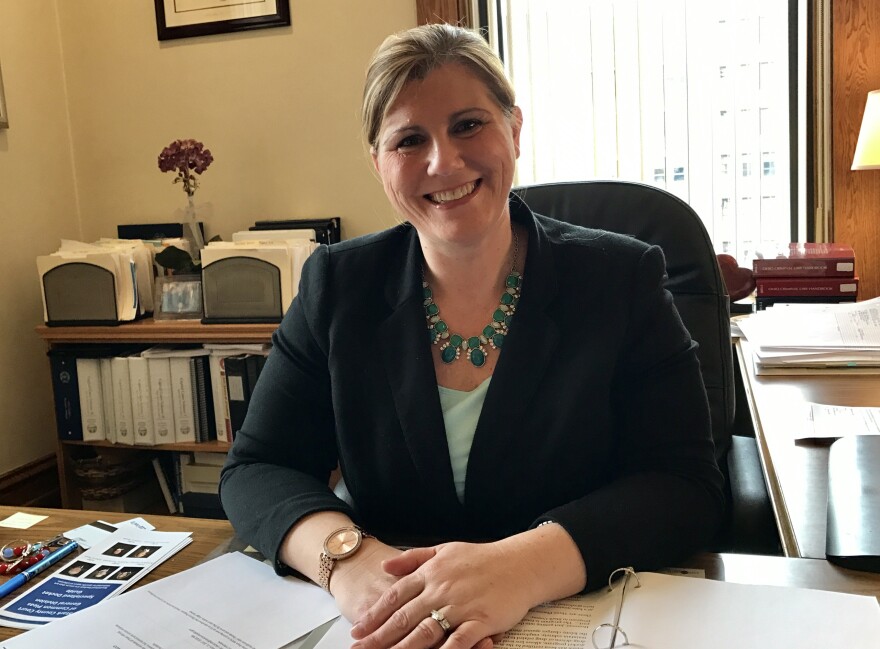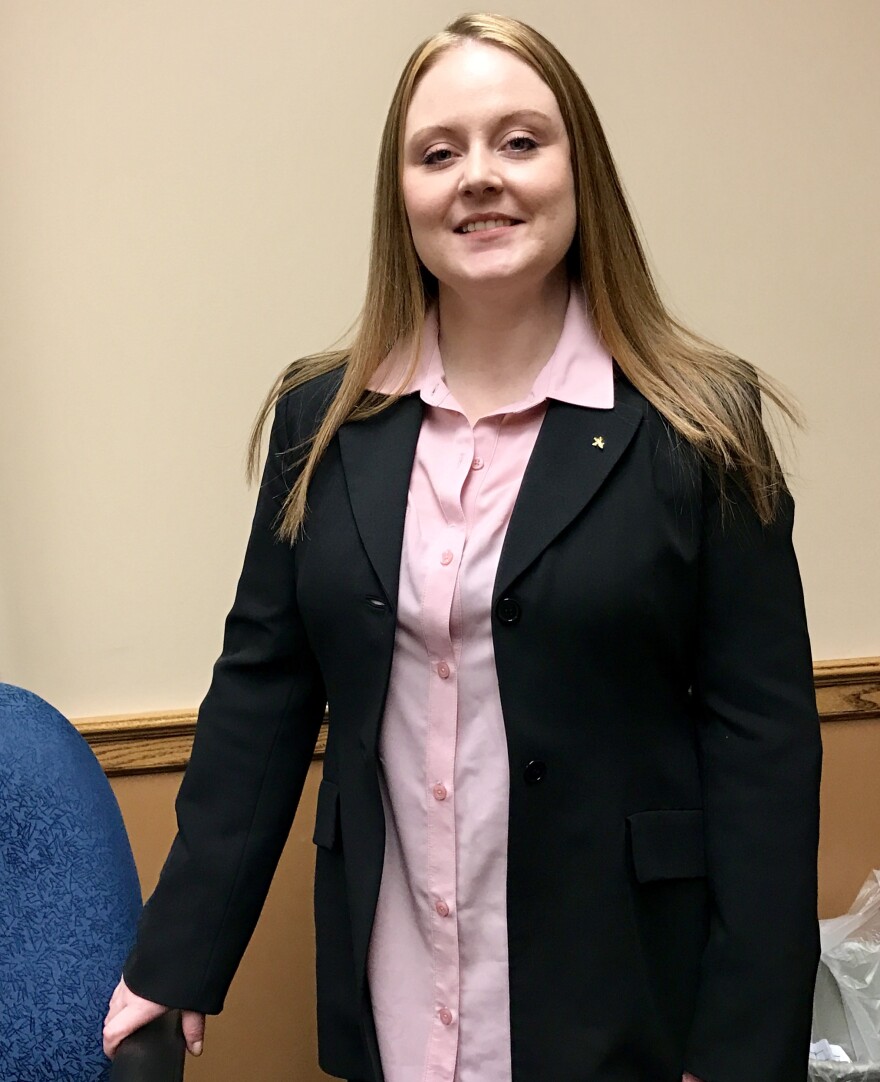
Ohio has a big problem with opioids and with prison overcrowding. A system meant to handle fewer than 39,000 people is holding more than 51,000, and many are relatively low-level drug offenders. But, as WKSU’s M.L. Schultze reports in this installment of our series, Opioids: Turning the Tide in the Crisis, the justice system is looking to alternatives to tackle the problem.
Later today, during Here and Now and All Things Considered, we’ll have more on the evolution in drug laws from “lock them up” to “help them out,” and the role race may have played.
Sixteen people show up for their regular appointment in Stark County’s drug court. It’s a quick and affirming run-through by Judge Kristin Farmer of a lot of things that have gone right.

“An excellent report with respect to your participation, your attitude. You’ve paid all your costs.”
She asks how the jobs going. “Real good,” he answers.
“It appears as though you have completed phase two of the program. So in recognition we have a small token for you. How many days have you been clean?
The answer, 177, gets big applause from the others in the court, both court employees and other participants in the drug court program.
But the day also includes an acknowledgement of something gone sadly wrong.
Farmer looks over at the group.
“There was a participant in this program who was rather new to this program who over the weekend had a relapse and as a result, committed suicide this morning. …”
A change in approach
At nearly 20, Stark County’s drug court is one of the oldest in the state. It was born during the war on crack – when the national focus was on maximum charges, mandatory sentences and three-strikes-you’re-out.

The court’s founder, Judge John Haas, says he had to make a practical, as well as a humane, argument to sell the idea of a court structured around treatment, accountability and rewards – the biggest of which is sealing the court record of graduates from the one-year program.
“The practicality is the economics. It’s going to save you money because they’re not going to be back in the system. But more importantly, these are human beings that have value and it’s the right thing to do.”
The recidivism rate is 13 percent for Stark’s drug-court graduates, about a fifth the national rate for untreated felons.
Can’t arrest our way out
The court predated the heroin epidemic. But half its cases now involve people abusing opioids and heroin. And all facets of the criminal justice system are dealing with a staggering numbers – of addicts and deaths.
So, from the head of Ohio’s prisons to judges like Kristin Farmer, you hear one phrase over and over:
“We’ve learned we cannot arrest out way out of the drug problem, and there has to be another way of dealing with offenders.”
'It's going to save you money ... But more importantly, these are human beings that have value.'
That other way – much of it funded by the Affordable Care Act -- is evolving.
Options
It still often starts with an arrest but now includes a system of conviction alternatives, community sanctions, detox, recovery houses, medication- assisted recovery and second chances.
Keith Hochadel runs CommQuest Services in Stark County, which had nearly 6,000 clients last year in its counseling, residential treatment and methadone and suboxone clinics. (Click here for more information on what the medication-assisted treatments do.)

Hochadel’s been on the receiving end of similar services. He used to be a pharmacist.
“Always wanted to be a pharmacist. That’s what my Dad did. He had a picture of me counting M&Ms at age 6. And then there’s the picture of me getting felonies for losing my license at age 35.”
In between came an early fondness for alcohol, a back injury, Vicodin, (click here for more in the links between heroin and prescription pain killers) filling pain-pill prescriptions for others, doctoring records, and a sentence to community treatment.
What followed, has been more than a decade of sobriety and helping others get there, too.
“I don’t think you ever say enough is enough. I think as long as someone’s upright and standing, there always ought to be that opportunity for them to get clean and sober and to make better choices.”

Women’s treatment
'The women are beautiful. They're broken, but they're beautiful.'
One of those opportunities – and still a relative rarity in Ohio -- is CommQuest’s Deliverance Recovery House for women, 16 beds in rooms filled with inspirational messages and in a building centered on recovery.
For a while, one of those beds was Ashley Hamlin’s. She’s 33 and was addicted to prescription pain pills by the time she was 16. The pills got too expensive, so her supplier suggested heroin.
“In my head, I justified it. I’m not using a needle. I’m just snorting it. I’m not as bad as those people.”
But snorting became shooting. She stole from a grandparent, prostituted herself, ended up in a drug house in Detroit. She says being an addict is a full-time job.
With the help of a sobriety sponsor, ongoing counseling and a new job, she’s been clean for 14 months. Sometimes the contrast startles even her.

“Pretty much just waking up every morning, I’m happy. And I could never say that when I was in my active using.“
Sheila Brown runs Deliverance Recovery House. She says while many of the women here are court-ordered, the model has switched from punishment to treatment and recovery. And a big piece of that is convincing the women they’re worth recovering.
“They have so much potential. The women are beautiful. They’re broken, but they’re beautiful.”
The case is made on a broader scale back at the drug court, where 19 people graduated yesterday in a courtroom packed with family, employers, even courthouse workers. Judge Haas says such moments mark a turning point not only for the individuals, but for the judicial system.








